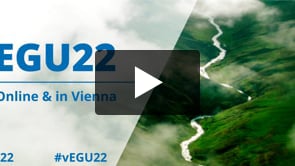Session programme
SEV – Side Events
LRS – Lectures organized by related scientific societies
LRS1
LRS2
LRS3
JpGU2
Thu, 26 May, 08:30–10:00 (CEST)|virtual (JpGU)
JpGU3
Fri, 27 May, 06:45–10:00 (CEST)|virtual (JpGU)
JpGU5
Wed, 25 May, 06:45–08:15 (CEST)|virtual (JpGU)
ESA-LPS22
ESA Living Planet Symposium 2022
Mon, 23 May, 09:00–19:00 (CEST)|virtual (ESA), Tue, 24 May, 09:00–19:00 (CEST)|virtual (ESA), Wed, 25 May, 09:00–19:00 (CEST)|virtual (ESA), Thu, 26 May, 09:00–19:00 (CEST)|virtual (ESA), Fri, 27 May, 10:30–12:30 (CEST)|virtual (ESA)

